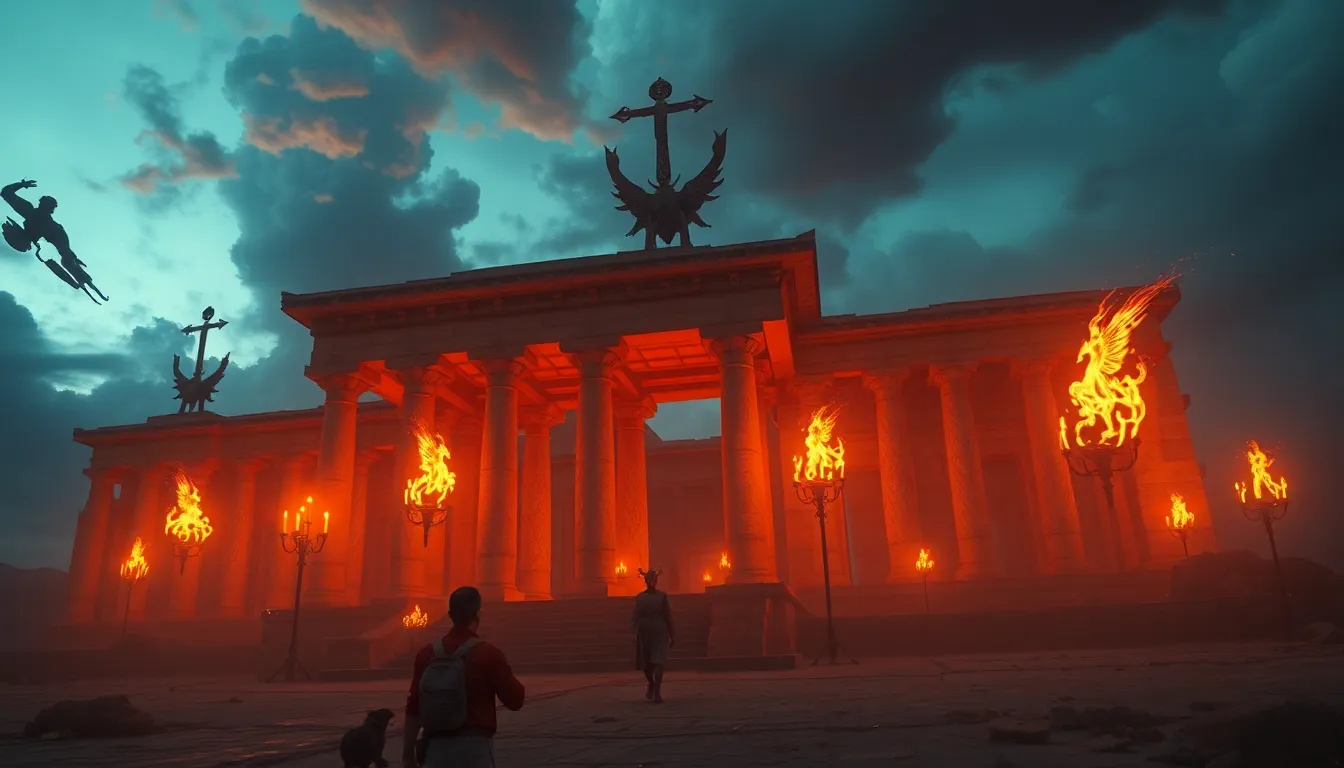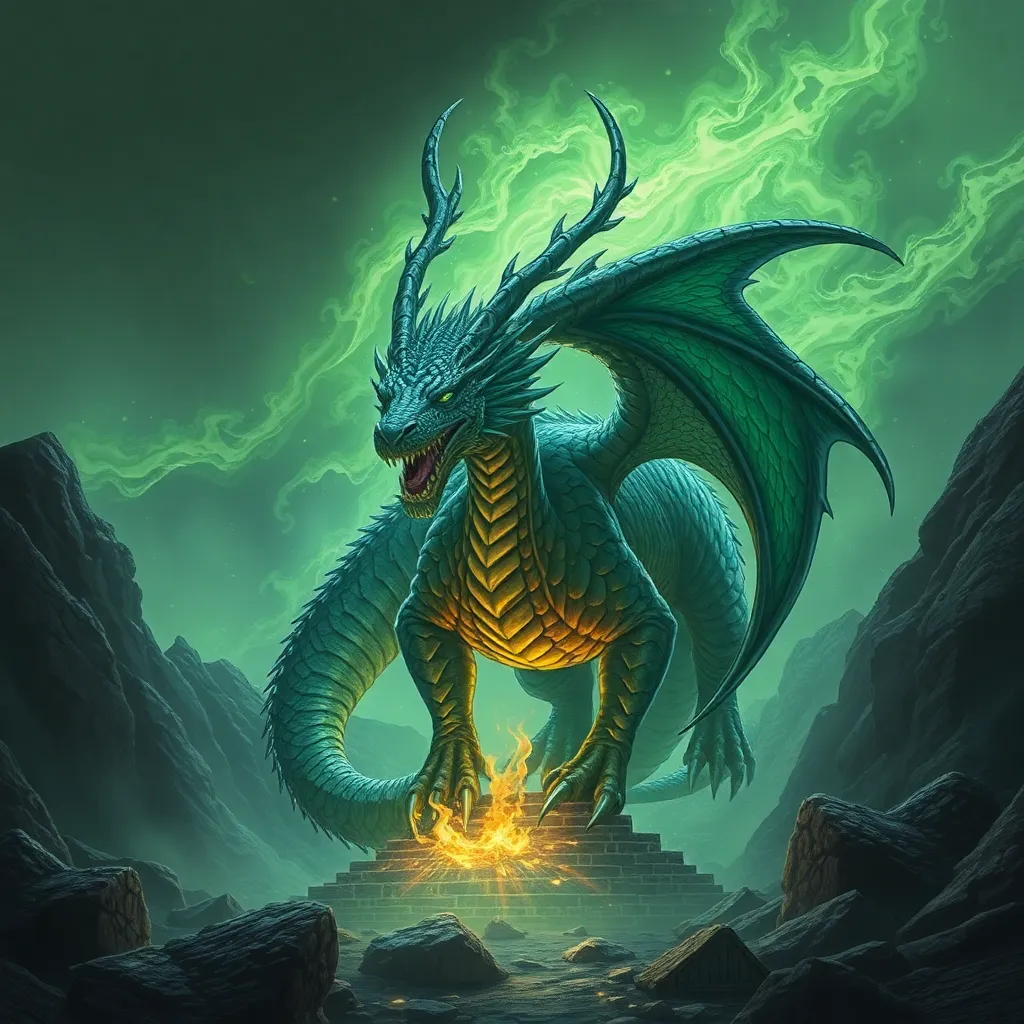The Role of Ancient Deities in Shaping Human History
I. Introduction
Ancient deities have played a crucial role in shaping human history, influencing various aspects of civilization from governance and social structure to art and scientific understanding. Defined as supernatural beings worshipped in various cultures, these deities often embody the values, fears, and aspirations of the societies that revere them.
Throughout early civilizations, deities were not merely objects of worship but integral components of social and political life. They were seen as forces that governed the cosmos and human affairs, providing a framework for understanding the world and human existence.
This article aims to explore the profound influence of ancient deities on human history, examining their roles across different cultures and time periods.
II. The Concept of Deity in Ancient Cultures
To understand the impact of deities, one must first examine the concept of deity in ancient cultures. Across civilizations, the nature of gods varied significantly, but certain common characteristics emerged.
- Polytheism vs. Monotheism: Many ancient cultures practiced polytheism, worshipping multiple gods who represented various aspects of life, nature, and human experience.
- Anthropomorphism: Deities were often depicted in human form, possessing human-like traits and emotions, which made them relatable to their followers.
- Symbolism: Each deity typically symbolized specific elements of life, such as fertility, war, wisdom, and the harvest.
Mythology played a pivotal role in shaping societal norms, providing narratives that defined moral codes, social structures, and the relationship between humans and the divine.
III. The Influence of Deities on Governance and Politics
Ancient deities significantly influenced governance and political structures. The divine right of kings, for instance, was a concept where rulers claimed their authority was granted by the gods, legitimizing their power.
Case studies from ancient Egypt and Mesopotamia illustrate this relationship:
- Ancient Egypt: Pharaohs were considered divine beings, intermediaries between gods and people. Their rule was justified by their connection to deities like Osiris and Ra, which enforced the idea of a theocratic government.
- Mesopotamia: City-states often worshipped a primary deity that represented their community. Kings were seen as representatives of these gods, and their decrees were viewed as divine will.
Religious symbolism permeated political power, with temples and religious sites serving as centers of authority and governance.
IV. Ancient Deities and Social Structure
Deities often mirrored and reinforced social hierarchies within ancient societies. The representation of gods reflected the cultural values and social structures of the time.
- Social Hierarchies: Many deities were associated with specific classes or groups, serving to legitimize the existing social order.
- Gender Roles: The portrayal of female deities, such as Isis in Egypt or Athena in Greece, often reflected and influenced the roles of women in society, highlighting both empowerment and constraints.
The impact of deities extended to class systems and community organization, often determining the distribution of power and resources within societies.
V. Religion, Morality, and Law: The Divine Code
Religious texts and teachings have profoundly influenced laws and moral frameworks throughout history. Ancient deities were often the source of moral guidance, shaping the ethical standards of their followers.
Case studies, such as the Code of Hammurabi and the Ten Commandments, illustrate how divine authority shaped legal systems:
- The Code of Hammurabi: This Babylonian law code was believed to be given by the god Marduk, emphasizing justice as a divine principle.
- The Ten Commandments: In Judeo-Christian tradition, these laws were delivered by God to Moses, forming the foundation of moral conduct in Western civilization.
Over time, the moral frameworks influenced by deities evolved, yet their origins often remained rooted in ancient beliefs.
VI. The Role of Deities in Art and Culture
Ancient deities have inspired countless artistic expressions, reflecting the cultural heritage and values of civilizations. The influence of these gods can be seen in various forms of art:
- Visual Arts: Sculptures, paintings, and pottery often depicted deities, serving both religious and aesthetic purposes.
- Literature and Storytelling: Myths and legends featuring gods preserved cultural narratives and moral lessons across generations.
Festivals and rituals honoring deities became significant cultural events, reinforcing community bonds and shared beliefs.
VII. Ancient Deities and Scientific Understanding
The intersection of mythology and early science showcases how ancient deities were utilized to explain natural phenomena. In a time when scientific knowledge was limited, gods provided a framework for understanding the world:
- Natural Events: Thunder, earthquakes, and other natural disasters were often attributed to the displeasure of the gods.
- Transition to Science: As scientific reasoning evolved, many mythological explanations were replaced by empirical understanding, leading to a gradual decline in the reliance on deities for explanations of the natural world.
VIII. The Decline of Ancient Deities and Their Legacy
Several factors contributed to the decline of polytheistic belief systems. The rise of monotheism, particularly with the spread of Christianity and Islam, significantly impacted the worship of ancient deities.
- Religious Transformation: The transition to monotheistic beliefs often led to the marginalization of polytheistic practices.
- Modern Relevance: Despite this decline, the legacy of ancient deities continues to influence modern society, from literature and art to cultural festivals and spiritual practices.
IX. Comparative Analysis of Different Pantheons
Examining various ancient pantheons reveals both similarities and differences. Major pantheons, such as those of the Greeks, Romans, Egyptians, and Hindus, showcase unique attributes while sharing common themes:
- Similarities: Many pantheons feature gods associated with nature, war, love, and wisdom.
- Differences: The characteristics, stories, and worship practices of deities vary widely across cultures.
- Syncretism: As cultures interacted, deities were often adapted, leading to the blending of religious beliefs and practices.
The enduring relevance of ancient deities is evident in contemporary culture, where their stories and symbols continue to resonate with people around the world.



